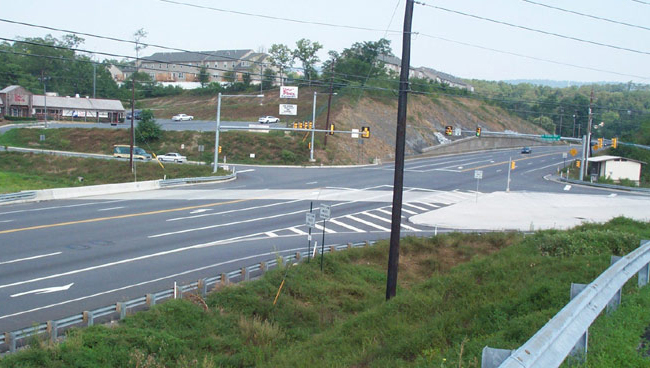Channelization

The concept of channelization is the design of traffic lanes and islands/medians in a way that provides definite paths for vehicles to follow through an intersection. Effective channelization reduces points of conflicting traffic movements and helps to separate traffic flow. Proper channelization increases capacity and improves safety. Improper channelization has the opposite effect and may be worse than none at all. Avoid over channelization as it can create confusion and worsen intersection operations.
There are several different types of channelization:
- Raised channelization: This channelization is accomplished through the use of curbed islands. Curbed islands prevent wrong way movements, provide a refuge area for pedestrian movements, and provide a location for posting signs and signals.
- Flush channelization: This channelization is accomplished by painting the travel path. While this can show the travel paths, it does not offer the pedestrian refuge and equipment location advantages of raised channelization since there is no curb to redirect vehicles back into their travel path.
- Channelizing islands: these are islands typically used through intersections, most frequently to channelize right-turn traffic away from the adjacent through movement. A Yield condition is often used where the right-turn merges with the side street.
- Divisional islands: these are typically used to divide adjacent lanes of traffic. The most frequent case is a median island that divides both directions of traffic.


